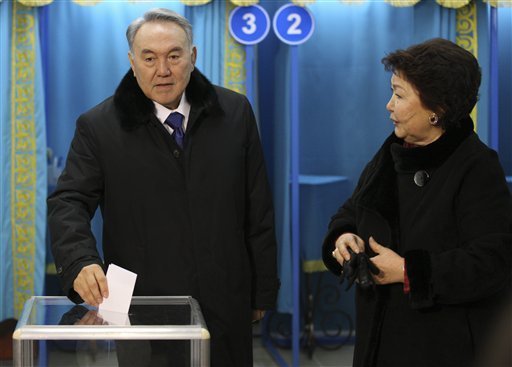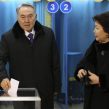
A Close-Up View of Kazakhstan’s Presidential Election
Publication: Eurasia Daily Monitor Volume: 8 Issue: 65
By:

An independent group of election observers released in Astana today its assessment of Kazakhstan’s April 3 presidential election. Comprised mostly of political and economic analysts from Washington think-tanks (including the Center for Strategic and International Studies, Institute for New Democracies, Hudson Institute, Georgetown University and The Jamestown Foundation), the group monitored the final stage of the election campaign in Kazakhstan, from March 29 through the April 3 balloting. A discussion of the group’s assessment with US State Department and National Security Council officials, via an Astana-Washington video-link, accompanied the release in Astana (“Independent Observer Mission for the Presidential Election in Kazakhstan: Post-Election Assessment,” April 4).
This group did not seek to duplicate or emulate the OSCE’s Office for Democratic Institutions and Human Rights (ODIHR), which as a rule focuses mostly on technical aspects of electoral processes. Instead, the small independent observer group viewed the election as testing Kazakhstan’s capacity to evolve toward open democratic politics. Specifically, it aimed to assess whether this election comes closer to meeting internationally accepted standards; and most importantly, whether the overall trend is positive, with distinct improvements over past elections.
The group met with the leaders of nine political parties and their staffs, election commission officials, and NGO representatives, during the campaign’s final stage. On the eve of the election and on election day, members of the group fanned out to four oblasts (Karaganda, Pavlodar, Akmola, and Almaty oblasts) as well as in the cities of Astana and Almaty. Group members visited sixty-five polling stations to observe the balloting. At five of these stations the group also observed the vote-count and closing procedures. Group members engaged in spontaneous conversation with hundreds of voters inside and outside polling stations after they had cast their ballots. The territory covered included urban and rural areas, working-class and white-collar constituencies, and Kazakh-majority and ethnic minority districts.
Unlike past elections, there were no visible signs of centrally directed administrative mobilization of voters to show up at the polls. Conversely, voters seemed motivated by a sense of civic consciousness (some describing this as “patriotism”) to cast their ballots.
From these findings, and based on the experience of most of its members monitoring elections in Kazakhstan and elsewhere since 1999, this observer group assessed the April 3 presidential election as successful on three levels.
First, it clearly reflects the political choice of Kazakhstani voters. Second, it marks a definite advance in the transparency of Kazakhstan’s electoral process, compared with previous elections. And third, it opens the way to the formation of a more pluralist parliament in next year’s legislative elections.
President Nursultan Nazarbayev has been re-elected with 95.5 percent of the votes cast, according to Central Electoral Commission’s preliminary returns (Kazinform, April 4). Three other candidates shared the remainder of votes cast. Nazarbayev’s score is consistent with his traditional approval rating. The turnout rate for this election, however, was extraordinarily high, at 89.9 percent of registered voters (up from 76.8 percent in the 2005 presidential election).
Such a turnout bespeaks a yearning to maintain stability and political continuity in Kazakhstan, under the leadership that has delivered growing prosperity. Voters often said that they valued Kazakhstan’s stability, security, and steadily increasing living standards in their country. They contrasted this with the chaos engulfing many Muslim countries, from North Africa and the Middle East to Afghanistan and Kyrgyzstan next door.
This observer group assessed the electoral process as generally well-administered and transparent at almost all the 65 polling stations that were visited. Organizational errors or significant lapses seemed rare, and could not detract from the overall impression of a decently run electoral process. Electoral commission members were invariably open and forthcoming with information about technical aspects of the process.
The group found in most places that commission members had attended training and seminars, ahead of the presidential election. Next year’s parliamentary elections will, by their very nature, pose more complex organizational challenges, necessitating appropriate preparations. Following the vote, Nazarbayev’s chief political adviser, Yermuhamet Yertysbayev, announced that reforms of the executive and legislative branches of government will follow (Habar, April 4).
Several Kazakhstani parties declined to enter their candidates in the presidential election, arguing that the 30 days allocated for the pre-election campaign were insufficient for them to organize a proper campaign effort. All the registered parties, whether involved in this presidential election or not, will have the opportunity to participate in next year’s legislative elections.
In conversations with this group, party leaders made clear that they expect to compete for parliamentary seats on the basis of specific programs and constituent interests in those elections. This would mark a further step in Kazakhstan’s institution-building process, evolving toward open democratic politics. The scope and pace of this process is best determined by the Kazakhstanis themselves.




